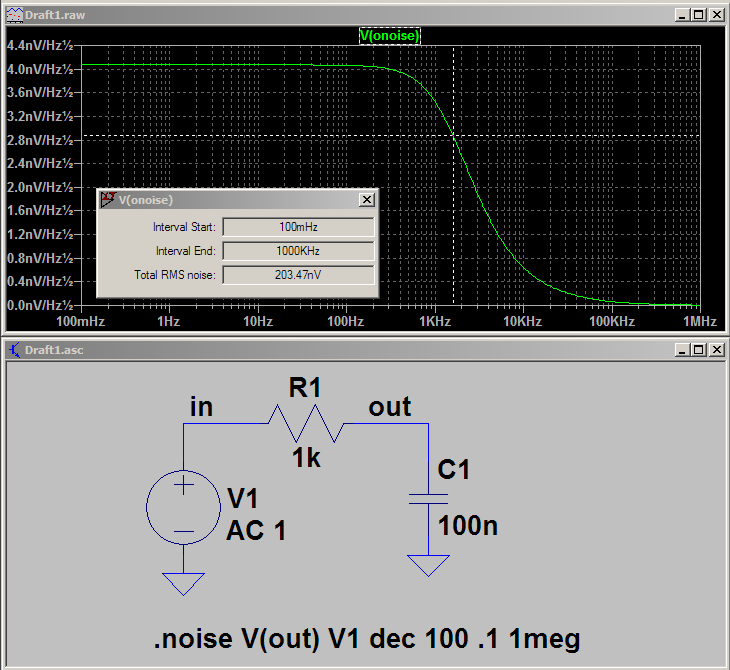One thing you don't specify is the noise type (white, digital clock, flicker, ...). A spectrum analyzer is handy for determining the characteristics of the noise.
If the noise is broadband, what is the bandwidth of the noise before filtering? You need to know the bandwidth so you can normalize the noise power to a 1 Hz bandwidth (noise spectral density).
To calculate noise voltage spectral density of your input signal, you need to know the bandwidth of your noise signal.
$$ e_n = {e_{nt} \over \sqrt{ENBW}} $$
Where:
\$ e_n \$ = noise voltage spectral density (noise voltage in a 1 Hz bandwidth)
\$ e_{nt} \$ = total noise in a given bandwidth. In your example, 1 mVrms.
\$ ENBW \$ = equivalent noise bandwidth. In your example, unknown.
With your simple R-C single-pole low-pass filter with a corner frequency of 1592 Hz \$ \left( 1 \over {2 \pi R C} \right)\$, the filter will have an equivalent noise bandwidth of 1.57 times the filter bandwidth, or about 2.5 kHz. With this information the noise voltage at the output of your filter can be calculated. $$ e_{nt} = e_n \sqrt{ENBW} = e_n \sqrt{2500} $$ Since \$ e_n \$ of your unfiltered signal is unknown, I'll leave the rest for you to figure out since there isn't enough information.
There is one other noise source and that's the thermal (Johnson) noise of the resistor in your filter. Resistor noise voltage spectral density is
$$ e_n = \sqrt{4 k_B T R} $$
Where
\$ k_B \$ = Boltzmann's constant
\$ T \$ = absolute temperature in kelvin
\$ R \$ = resistance (real)
At room temperature \$ e_n \approx 0.13 \sqrt{R} \quad nV/\sqrt{Hz} \$
The 1k resistor in your filter produces about 4 \$nV/\sqrt{Hz}\$, or about 200 nVrms of total noise at the output of the filter.
ToJust for fun, a SPICE simulation of the resistor noise of the filter:

To be complete, the resistor noise must be added to your source noise. The resistor noise of the filter will probably be insignificant for your case. Summing uncorrelated noise $$ e_{nt}^2 = e_{n1}^2 + e_{n2}^2 + e_{n3}^2 + ... + e_{ni}^2 $$
